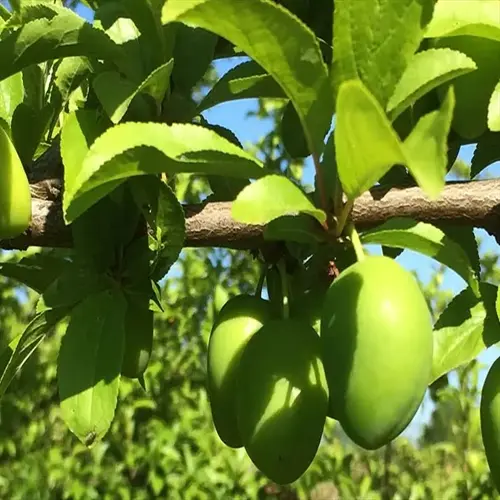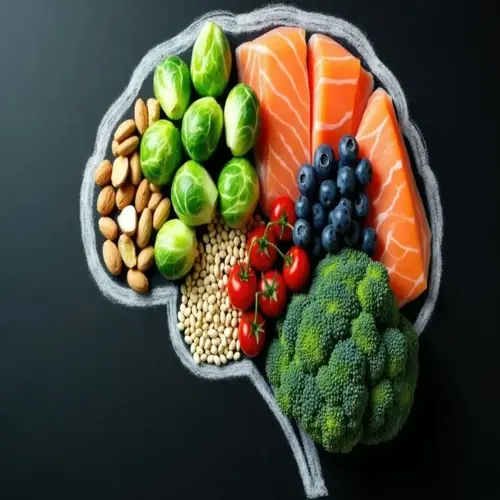10 Gluten Free Benefits You Should Know

Written by
Chen Jialiang
Reviewed by
Prof. Graham Pierce, Ph.D.There are benefits to being gluten-free like decreased inflammation and better absorption efficiency with regards to nutrients
A gluten-free diet also boosts energy levels through improved mitochondrial cellular function
A gluten-free diet is weight beneficial because it decreases the consumption of processed food
There is a decrease in joint pain as the markers of systemic inflammation decrease
An increase in the consumption of fruits and vegetables brings more antioxidants and fiber to the diet
The mental clarity also improves through better communications between the gut and the brain
Article Navigation
Have you felt a slump in energy levels after lunch? You may be experiencing common digestive issues that you don't realize are caused by your food choices. The gluten-free benefits I learned about when I suffered from similar fatigue changed my life! Many people find relief from dietary changes.
Selecting a gluten-free diet transcends medical necessity. It is a holistic wellness lifestyle. Your energy level, digestive comfort, and mental clarity will improve. You may find that you are naturally more focused throughout the day.
Before changing your diet, it is always recommended to consult a physician. They will help determine if gluten sensitivity affects you. Embark on your path to a healthier life with expert evaluation. Individual trial and error cannot replace expert medical advice.
What Gluten Really Is
Gluten is a *network of proteins* made of two specific proteins called gliadin and glutenin. Gluten is formed when flour is mixed with water, and the proteins in the flour bind to each other. This creates the elasticity you feel when kneading bread dough. Understanding this concept makes it easier to explain the behavior of gluten.
Consider gluten to be nature's edible glue. Gluten supplies the elastic property to hold food together. It is just this gluing property of products that gives bread its delicious chewiness. Without gluten, many baked goods would easily crumble apart. The elasticity is what literally holds the ingredients together during cooking.
You will find gluten in several common grains. The largest amounts are in wheat, followed by barley and rye. The hybrid grain triticale also contains gluten. Always examine the labels, for these grains are frequently present in unexpected products, including sauces and soups.
Oats are unique in this case, as they are naturally gluten-free, but are notorious for potential cross-contamination with other grains. The processing plants that handle wheat also process oats. For safety, choose oats that are labeled certified gluten-free. This guarantees that there was no contact with gluten grains during production.
Common Food Sources
- Bread, pasta, cereals, and baked goods contain significant gluten amounts
- Soups, sauces, salad dressings often use wheat as thickener
- Processed meats like sausages may include gluten as binder
- Beer derives from barley malt containing substantial gluten
- Unexpected items: some medications, vitamins, and cosmetics
Functional Properties
- Provides elastic texture allowing dough to stretch without tearing
- Traps carbon dioxide during fermentation helping bread rise
- Gives chewiness to baked goods like bagels and pizza crust
- Acts as binding agent in processed foods and sauces
- Contributes to moisture retention extending product shelf life
Naturally Gluten Free Foods
The core of gluten-free meals consists of fresh fruit and vegetables. Other naturally safe selections consist of bright berries, crisp greens, and colorful bell peppers. Caution should be exercised when consuming pre-cut produce and sauces, as they may contain hidden gluten. Always rinse fresh fruit and vegetables before consuming them.
Lean protein sources, such as chicken breast and fish, offer perfect gluten-free options. Choose plain cuts of meat instead of pre-marinated or pre-processed varieties, which may contain gluten from products such as soy sauce. Processed meats, such as sausage, often contain gluten, so be sure to check the labels closely. Fresh fish is still safe when cooked, as long as it is not cooked in batter.
Unlikely gluten-free staples include eggs, plain dairy products, and legumes. Natural cheese and plain yogurt provide protein without the risk of gluten. Nut products from bulk bins can contain accidental contamination; therefore, look for them in certified packages. Lentils and beans also make excellent pantry staples for creating wholesome meals.
Choose whole foods as much as possible instead of processed alternatives. Grains like quinoa and rice offer nutritious alternatives to wheat-based grains. Pure olive oil and avocado offer healthy fats without additives. Remember that certified gluten-free oats are safe from cross-contamination during processing.
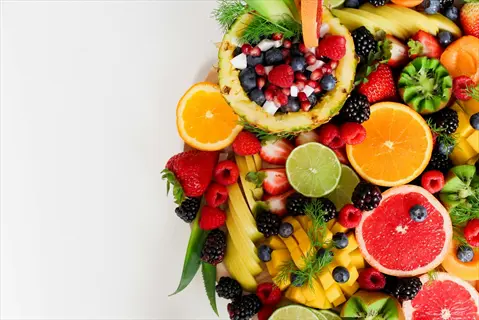
Fresh Fruits
- All whole fresh fruits including berries, citrus varieties, and melons are naturally gluten-free without requiring special certification when consumed raw
- Pre-cut fruits with added sauces or flavorings should be avoided since they may contain gluten-containing thickeners derived from wheat sources
- Dried fruits require careful examination for potential wheat-based anti-caking agents that are sometimes added during industrial processing stages
- Frozen fruits without additives represent safe gluten-free options perfect for creating nutritious smoothies and desserts free of contamination concerns
- Canned fruits packed in natural juice or water rather than syrups provide reliably gluten-free alternatives for convenient consumption
- Simple fruit-based desserts such as baked apples stuffed with nuts offer delicious gluten-free treats requiring minimal preparation time
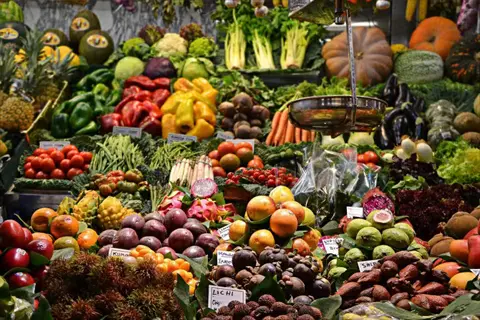
Vegetables
- All raw vegetables including leafy greens, root vegetables, and cruciferous varieties remain completely gluten-free when prepared without sauces or seasonings
- Pre-washed salad mixes may contain trace gluten amounts due to potential cross-contamination within shared processing facilities handling wheat products
- Frozen vegetables without sauces or seasonings maintain their natural gluten-free integrity making them ideal for quick meal preparation
- Canned vegetables require thorough verification to ensure no gluten-containing additives exist within their liquid preservation solutions
- Vegetable chips need explicit gluten-free certification due to potential cross-contamination risks during industrial manufacturing processes
- Roasted vegetables prepared simply with olive oil create flavorful gluten-free side dishes suitable for any dietary requirements

Lean Meats
- Unprocessed cuts of beef, pork, poultry, and fish contain absolutely no gluten proteins making them foundational for safe meals
- Pre-marinated meats should be avoided because they frequently utilize soy sauce or wheat-containing ingredients during flavor infusion processes
- Processed meats including sausages often incorporate gluten-based binders which necessitate careful label examination before consumption
- Deli meats require verification since many contain hidden gluten sources within flavorings and industrial processing aids
- Fresh seafood without batter or coatings remains naturally gluten-free when prepared using dedicated cooking equipment and surfaces
- Grilled chicken breasts provide versatile high-protein foundations for creating numerous satisfying gluten-free meal combinations
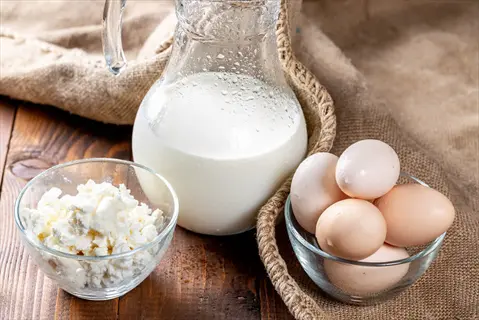
Eggs and Dairy
- Plain eggs cooked without gluten-containing additives remain completely safe and nutritious options for gluten-sensitive individuals
- Basic milk, butter, and natural cheeses contain no gluten proteins when produced without additional flavorings or processing agents
- Flavored yogurts often contain gluten from thickeners or cookie pieces requiring careful label examination before purchase
- Processed cheese products frequently include wheat-based anti-caking agents that introduce hidden gluten into otherwise safe foods
- Ice cream requires certified gluten-free status due to potential cross-contamination from mix-ins like cookie dough pieces
- Plain cottage cheese offers protein-rich gluten-free breakfast options that can be enhanced with fresh fruits safely
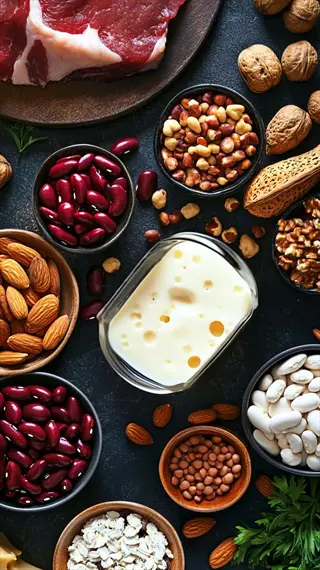
Legumes and Nuts
- Dried beans, lentils, and peas serve as naturally gluten-free pantry staples perfect for soups and stews without contamination concerns
- Pre-seasoned nut mixes frequently contain wheat-based flavorings making raw unseasoned varieties the safest gluten-free choice
- Significant cross-contamination risks exist in bulk bins at grocery stores where shared scoops transfer gluten particles
- Nut butters should be single-ingredient or certified gluten-free since many commercial varieties add wheat-based stabilizers
- Canned beans require careful label verification to ensure no gluten-containing additives exist within their preservation liquids
- Roasted chickpeas create delicious crunchy gluten-free snack alternatives that provide substantial protein and fiber content

Gluten-Free Grains
- Quinoa provides complete protein profiles and cooks significantly faster than traditional gluten-containing grains while being versatile
- Rice varieties including brown, white, and wild rice remain naturally gluten-free staples suitable for diverse culinary applications
- Buckwheat despite its potentially misleading name contains no gluten proteins and offers impressive nutrient density advantages
- Certified gluten-free oats undergo specialized processing to completely avoid wheat cross-contamination during harvesting and milling
- Millet and sorghum grains work exceptionally well in gluten-free baking mixes providing texture and nutritional benefits
- Amaranth seeds deliver higher protein content than wheat gram for gram while being completely free of gluten proteins

Healthy Fats
- Avocados provide beneficial monounsaturated fats and substantial fiber content while being naturally gluten-free without processing concerns
- Pure olive oil and coconut oil contain absolutely no gluten proteins making them ideal cooking fats for restricted diets
- Nuts and seeds offer valuable combinations of healthy fats and proteins that remain gluten-free in their natural forms
- Commercial salad dressings require verification since many contain gluten-based thickeners and wheat-derived flavoring components
- Mayonnaise needs careful examination because some vinegar sources and stabilizers may introduce gluten contamination risks
- Freshly prepared guacamole avoids potential gluten exposure from processed additives commonly found in commercial versions

Herbs and Spices
- Fresh herbs including basil, cilantro, and parsley contain no gluten proteins and enhance flavors without contamination risks
- Single-ingredient dried spices remain naturally gluten-free options when sourced from dedicated gluten-free facilities
- Spice blends frequently contain wheat flour as anti-caking agents necessitating careful label examination before use
- Commercial seasoning mixes require explicit gluten-free certification due to potential hidden wheat-based ingredients
- Homegrown herbs provide completely safe gluten-free seasoning options that eliminate all cross-contamination concerns
- Herb-infused oils create flavorful gluten-free cooking bases that add complexity to dishes without wheat exposure

Beverages
- Plain water, coffee, and tea contain absolutely no gluten proteins making them inherently safe for sensitive individuals
- Flavored coffee and tea products may include gluten-containing additives requiring careful label verification before consumption
- Wine and properly distilled spirits remain gluten-free despite grain origins due to molecular separation during production
- Beer requires certified gluten-free status since traditional versions contain barley proteins that trigger reactions
- Pure fruit juices without additives represent reliably gluten-free beverage choices suitable for all dietary needs
- Homemade smoothies using whole ingredients provide nutritious gluten-free alternatives to commercial beverage products

Sweeteners
- Pure unprocessed honey contains no gluten proteins and provides natural sweetness without contamination concerns
- Authentic maple syrup remains naturally gluten-free when produced without wheat-based processing aids or additives
- Granulated cane or beet sugar contains absolutely no gluten proteins in its standard refined commercial forms
- Powdered sugar requires verification since some manufacturers use wheat starch instead of cornstarch as anti-caking agents
- Pure molasses delivers substantial mineral content without gluten contamination when sourced from dedicated facilities
- Stevia and monk fruit extracts offer zero-carb gluten-free sweetening alternatives suitable for strict dietary requirements
Practical Tips for Success
Master Gluten-Free Shopping with Smart Strategies! Always *read ingredient labels* to check for wheat, barley, and rye. Look for certified gluten-free symbols on the packaging. Shop the perimeter of the store, where you'll find fresh produce and proteins. Prepare gluten-free shopping lists to avoid incorrect impulse buying.
Protecting the kitchen is important. Use color-coded utensils. Red is for gluten-free items. Use separate cutting boards and separate storage for gluten-free products. Wash your hands and clean surfaces before preparing meals. Store gluten-free items on higher shelves to avoid crumb contamination from above.
To navigate restaurants with confidence, use the following strategies: research menus online before your visit, call during non-busy hours and talk to chefs about preparation methods, etc. You can ask whether they have separate fryers for frying or how sauces are made. You can carry cards explaining your needs in the local language, which will facilitate communication.
Swap typical gluten options for simple alternatives. Use 1:1 gluten-free baking mixes for wheat flour. Use tamari rather than soy sauce for stir-fry. Use rice noodles instead of traditional pasta. Crumble gluten-free crackers for breading instead of using regular breadcrumbs.
Shopping Strategies
- Read ingredient labels systematically: Check for wheat, barley, rye in all packaged foods
- Look for certified gluten-free symbols with <20ppm certification on product packaging
- Shop store perimeter first focusing on fresh produce, meats and dairy sections
- Use dedicated gluten-free shopping lists to avoid impulse buys of unsafe products
- Research brands beforehand using gluten-free apps to streamline grocery trips
Kitchen Safety
- Designate gluten-free zones with separate cutting boards and cooking utensils
- Use color-coded kitchen tools: red for gluten-free, blue for gluten-containing items
- Clean surfaces thoroughly with soap and water before preparing gluten-free meals
- Store gluten-free foods on higher shelves to prevent crumb contamination
- Invest in separate toaster or toaster bags to prevent cross-contact
Dining Out Safely
- Review restaurant menus online in advance to identify gluten-free options
- Call ahead during off-peak hours to discuss preparation protocols with chefs
- Ask specific questions: Is fryer dedicated? Are sauces made in-house?
- Choose naturally gluten-free cuisines like Mexican (corn tortillas) or Thai (rice noodles)
- Carry restaurant cards explaining dietary needs in the local language
Travel Preparation
- Pack gluten-free snacks: nuts, seeds, fruit, certified bars for emergency meals
- Research destination grocery stores and restaurants using gluten-free apps
- Book accommodations with kitchenettes to prepare safe meals when traveling
- Learn key phrases: 'Sin gluten' (Spanish), 'Sans gluten' (French) for communication
- Carry doctor's note explaining medical necessity for dietary restrictions
Social Event Preparation
- Communicate dietary needs to hosts at least one week before events
- Offer to bring gluten-free dishes to ensure safe eating options
- Eat beforehand to avoid hunger if limited safe options available
- Carry emergency snack pack with gluten-free crackers and nut butter
- Identify one trusted person who understands your dietary restrictions
Who Benefits Most
People with celiac disease have much to gain from the gluten-free diet. The ingestion of gluten triggers a reaction in their bodies, resulting in damage to the intestinal tract's lining and leading to various digestive complaints, including chronic diarrhea and bloating. Removal of gluten from the diet allows the intestinal injury to heal and prevents serious long-term complications. These patients must adhere to strict gluten-free diets if their health status is to improve.
Individuals with gluten sensitivity have legitimate distress despite no celiac evidence. They complain of bloating and irregularity after ingesting gluten. Many report improved energy levels and mental acuity from its withdrawal. This group of individuals can discover their respective tolerances through careful dietary trials.
Some health-conscious individuals particularly favour gluten-free eating because of its various holistic benefits, which extend beyond medical necessity. They find that reduced inflammation and improved digestion result. Athletes also adopt a gluten-free diet in pursuit of potential recovery benefits from their dietary pattern. These nutritional choices align well with other healthy habits, such as eating whole foods and avoiding processed foods.
Always consult a physician before making changes to your diet. A qualified laboratory test should determine the existence of a true gluten problem. Self-diagnoses may overlook other health issues you may have. Having a doctor guide you through the transitions also ensures your nutrition remains balanced in the process. You deserve to know, not guess, about your health.
Celiac Disease Patients
- Experience immune system reactions damaging small intestine lining when consuming gluten
- Show digestive symptoms including chronic diarrhea, abdominal pain, and bloating
- Develop nutrient malabsorption leading to anemia and weight loss over time
- Require strict lifelong gluten avoidance to prevent intestinal damage
- Notice symptom improvement within weeks of starting gluten elimination
- Reduce long-term complication risks like osteoporosis through strict adherence
Gluten Sensitivity Individuals
- Experience digestive discomfort without celiac disease or wheat allergy diagnosis
- Report bloating, gas, and irregular bowel movements after gluten consumption
- Show no intestinal damage but benefit from symptom reduction dietarily
- May test negative for celiac yet respond positively to gluten elimination
- Often discover improved energy levels and mental clarity avoiding gluten
- Determine personal tolerance levels through guided dietary experimentation
Wheat Allergy Sufferers
- Develop immune reactions to wheat proteins rather than specifically gluten
- Experience symptoms ranging from hives to digestive distress after exposure
- Benefit from gluten-free foods since they inherently exclude wheat ingredients
- May tolerate barley or rye unlike celiac patients in some circumstances
- Require careful label reading since non-wheat gluten grains might be safe
- Carry epinephrine auto-injectors for severe anaphylactic reaction risks
Wellness-Focused Individuals
- Seek increased energy and reduced inflammation without medical diagnosis
- Report subjective improvements in digestion and joint comfort dietarily
- Explore gluten-free eating as part of holistic lifestyle optimization
- May combine with other dietary approaches like reduced processed foods
- Focus on naturally gluten-free whole foods rather than specialty products
- Maintain flexibility allowing occasional gluten exposure without symptoms
Athletic Performance Seekers
- Experiment with gluten-free diets to reduce inflammation affecting recovery
- Report enhanced endurance and reduced muscle soreness anecdotally
- Focus timing around training sessions when digestive comfort matters most
- Combine gluten-free approach with strategic carbohydrate loading techniques
- Monitor energy levels carefully to avoid unintended calorie deficits
- Work with sports nutritionists to maintain balanced nutrient intake
10 Key Gluten Free Benefits
Quitting gluten can significantly improve your energy levels. Less inflammation means the body can absorb nutrients more effectively. Afternoon slumps will disappear when switching to quinoa bowls. Mitochondrial function improves, providing a steady energy supply throughout the day with no crashes.
Joint pain frequently decreases substantially on gluten-free diets. Systemic inflammation decreases sensitivity to tissues. Many state they feel better movement soon after quitting drinking barley gluten. Additionally, the amount of bloating is also reduced since the fermentation of gluten grains stops. One will feel the comfy fit of clothing after meals.
A gluten-free diet naturally increases fruit and vegetable intake. Rainbow salads replace sandwiches, thus increasing fiber and antioxidant intake. Bone density improves due to increased calcium absorption. Creative cooking expands with chickpea flatbreads and buckwheat noodles. This encourages new culinary adventures.
Through heightened communication between the gut and brain, mental clarity emerges. A greater focus is experienced during afternoon meetings without brain fog. Finding ancient grains, such as teff, brings nutritional variety. The overall health of the body continues to improve with these concrete gluten-free benefits that truly improve day-to-day quality of life.
Elevated Energy Levels
- Reduces inflammation that impairs nutrient absorption in the small intestine
- Improves iron uptake combating fatigue-causing anemia within 2-4 weeks
- Enhances mitochondrial function for more efficient cellular energy production
- Example: Switching to quinoa bowls boosts afternoon productivity noticeably
- Supports adrenal gland function helping maintain consistent energy throughout the day
Healthy Weight Support
- Reduces bloating and water retention by eliminating inflammatory triggers
- Balances leptin signaling improving metabolic rate regulation long-term
- Encourages whole-food choices over processed high-calorie alternatives
- Example: Replacing pasta with zucchini noodles cuts 200 calories per serving
- Promotes stable blood sugar levels preventing energy crashes and overeating
Reduced Bloating
- Decreases gas production by preventing undigested gluten fermentation
- Improves gut motility reducing abdominal distension within 48 hours
- Alleviates discomfort after meals allowing comfortable clothing fit
- Example: Eliminating bread resolves chronic post-dinner bloating
- Enhances digestive enzyme production for more efficient food breakdown
Joint Pain Relief
- Lowers systemic inflammation that aggravates joint tissue sensitivity
- Reduces cytokine production linked to knee and wrist discomfort
- Improves mobility by decreasing morning stiffness within 3 weeks
- Example: Arthritis sufferers report better movement after eliminating barley
- Decreases inflammatory markers in blood tests confirming physiological changes
Fewer Processed Foods
- Eliminates common gluten sources: breads, crackers, and baked goods
- Encourages vegetable-based alternatives like almond flour crackers
- Reduces sodium intake by 30% on average through whole-food focus
- Example: Homemade sweet potato toast replaces packaged bread slices
- Decreases consumption of artificial preservatives and food colorings
More Fruits and Veggies
- All produce is naturally gluten-free, increasing daily consumption
- Boosts fiber intake to 25-30g/day improving digestive regularity
- Provides antioxidant protection against cellular oxidative stress
- Example: Rainbow salads become staple meals instead of sandwiches
- Increases phytonutrient diversity supporting overall immune function
Stronger Bones
- Enhances calcium absorption previously blocked by intestinal inflammation
- Provides magnesium from leafy greens improving bone mineralization
- Reduces osteoporosis risk by improving vitamin D utilization
- Example: Collard greens offer 25% more calcium than dairy per serving
- Improves bone density measurements in long-term gluten-free adherents
Creative Cooking
- Inspires alternative flours: coconut, chickpea, and cassava blends
- Develops new skills like homemade gluten-free pasta preparation
- Increases recipe diversity with global naturally gluten-free dishes
- Example: Buckwheat soba noodles open up Japanese cuisine exploration
- Encourages seasonal ingredient use adapting recipes to fresh local produce
New Food Discoveries
- Introduces ancient grains: teff, amaranth, and sorghum varieties
- Expands protein sources with lupin flour and hemp seeds
- Discovers flavor combinations like nutritional yeast "cheese" sauces
- Example: Teff pancakes provide nutty flavor and iron boost
- Explores international gluten-free staples like Brazilian tapioca crepes
Mental Clarity
- Reduces brain fog by optimizing gut-brain axis communication
- Improves focus duration by stabilizing blood sugar fluctuations
- Enhances cognitive processing speed within 14 days of elimination
- Example: Professionals report better concentration in afternoon meetings
- Supports neurotransmitter balance through improved nutrient absorption
5 Common Myths
The approach is healthier for them, regardless of their medical needs.
@ Not all regimens are healthy, because many of the prepared forms are higher in sugar and fat, and lower in fiber and nutrients than the original grains. It depends on getting at the very least natural gluten-free products, that is, relying on the original whole foods that are gluten-free. Too many of the prepared forms lack the B vitamins and iron unless they are fortified in some special way.
Automatic weight loss results from giving up gluten in the diet and dietary changes are unnecessary
It is not necessarily true that if gluten is given up it will produce weight loss, for veal and gluten-free foods are often fat and the excessive use of them would mean weight gain. Sustained weight control consists mainly in watching the amount of food taken and limiting its caloric value, and getting an adequate amount of exercise and physical work into one's life. Merely to give up gluten in order to get rid of excess weight is not guaranteed to succeed.
All gluten-free products have superior nutrition compared to those that contain gluten
Many gluten-free products are nutritionally inferior as they consist of refined starches that have little fiber and higher glycemic indexes and lack protein and micronutrients found in whole grains. People should eat whole foods such as quinoa or brown rice in lieu of these processed foods to maintain nutritional balance.
When adopting a rigid gluten-free diet, it is often impossible to eat out
It is still possible to dine out, but it is necessary to plan ahead (e.g. by researching menus), communicating clearly to restaurant staff regarding equipment used in preparation, selecting cuisines that are naturally (rice- and corn-based) gluten-free cuisines, i.e. Mexican and Thai-foods, and many establishments now offer foods gluten-free and the procedures for putting them out.
Non-celiac gluten sensitivity is not a legitimate medical condition recognized by science.
Studies show that those with non-celiac gluten sensitivity display measurable digestive symptoms, as well as other symptoms in their bodies, without indicators of celiac disease and that symptoms improve with elimination of gluten from the diet and return when gluten is fed back into the diet under controlled conditions. The recognition of a condition such as non-celiac gluten sensitivity necessitates that an individual be thoroughly evaluated by a doctor to evaluate other possible diagnoses.
Conclusion
Making the switch to a gluten-free lifestyle will require some adjustments, but there are real benefits. You may need some time to discover which foods are safe for you to eat and establish new eating habits. The effort is well worth it, as this will result in a natural increase in your energy level and sense of well-being. The transition is often made easier by meal planning and maintaining a well-organized kitchen.
Always consult a healthcare professional before making any dietary changes. Doctors are the ones who can test for true gluten issues. Nutritionists can help identify healthy, balanced meals that are free from deficiencies. Eliminating foods without professional guidance may overlook underlying health issues that require attention.
The benefits extend well beyond mere medical necessity into primary wellness. Reduced inflammation enhances joint health and skin clarity through natural processes. Mental focus becomes sharper, free from brain fog. Creative cooking from new foodstuffs adds a joyful variety to your meals.
Living gluten-free is easier and more enjoyable than ever. You will find a plethora of information and product sources to support you in your journey. Concentrate on eating fresh, whole foods rather than looking for substitutes that are cleverly processed from gluten-filled foods. You will discover how you can control your destiny when you learn to create delicious gluten-free meals.
External Sources
Frequently Asked Questions
What are the primary health benefits of a gluten-free diet?
Gluten-free benefits include reduced inflammation, improved nutrient absorption, increased energy levels, better digestive health, and enhanced mental clarity. This dietary approach helps alleviate symptoms like bloating and joint pain while promoting overall wellness through whole-food consumption.
Is a gluten-free diet automatically healthier?
Not necessarily. While beneficial for gluten-sensitive individuals, gluten-free processed foods often contain more sugar and fat with less fiber. True health benefits come from focusing on naturally gluten-free whole foods like fruits, vegetables, and lean proteins instead of substitutes.
How does gluten elimination affect digestion?
Removing gluten improves gut health by reducing intestinal inflammation and enhancing nutrient absorption. Key changes include decreased bloating, better bowel regularity, and reduced gas production due to less fermentation of undigested proteins in the digestive tract.
Can gluten affect skin health?
Yes, gluten can impact skin through inflammatory responses. Eliminating gluten may improve conditions like dermatitis herpetiformis and reduce acne or eczema flare-ups. Many report clearer complexion and reduced facial puffiness due to decreased water retention.
What common foods surprisingly contain gluten?
Beyond obvious sources like bread, hidden gluten appears in:
- Soy sauce and marinades
- Processed meats like sausages
- Salad dressings and soups
- Flavored coffees and teas
- Some medications and supplements
Do naturally gluten-free grains provide good nutrition?
Absolutely. Gluten-free grains like quinoa, buckwheat, and rice offer excellent nutritional profiles including:
- Higher protein content than wheat
- Rich antioxidant properties
- Essential minerals like magnesium and iron
- Digestive-friendly fiber
- Lower glycemic impact
How long until benefits appear after going gluten-free?
Timing varies significantly:
- Digestive improvements: 2-7 days
- Energy and mental clarity: 1-3 weeks
- Joint pain reduction: 3-6 weeks
- Full gut healing: Several months
- Consistency and cross-contamination avoidance are critical
Can gluten contribute to weight gain?
Gluten itself doesn't cause weight gain, but gluten-containing processed foods are typically calorie-dense. Eliminating them often leads to healthier choices, reduced bloating, and better portion control, which may support weight management when balanced properly.
Are dairy products safe for gluten-free diets?
Most plain dairy like milk and butter is naturally gluten-free. Caution needed with:
- Flavored yogurts (may contain additives)
- Processed cheeses (anti-caking agents)
- Ice cream with mix-ins
- Always verify labels for gluten-free certification
Why has gluten-free eating become more popular?
Increased popularity stems from greater awareness of gluten sensitivities, expanded product availability, and recognition of secondary benefits like reduced inflammation. Wellness trends also drive adoption among those seeking digestive comfort and whole-food nutrition without medical necessity.
